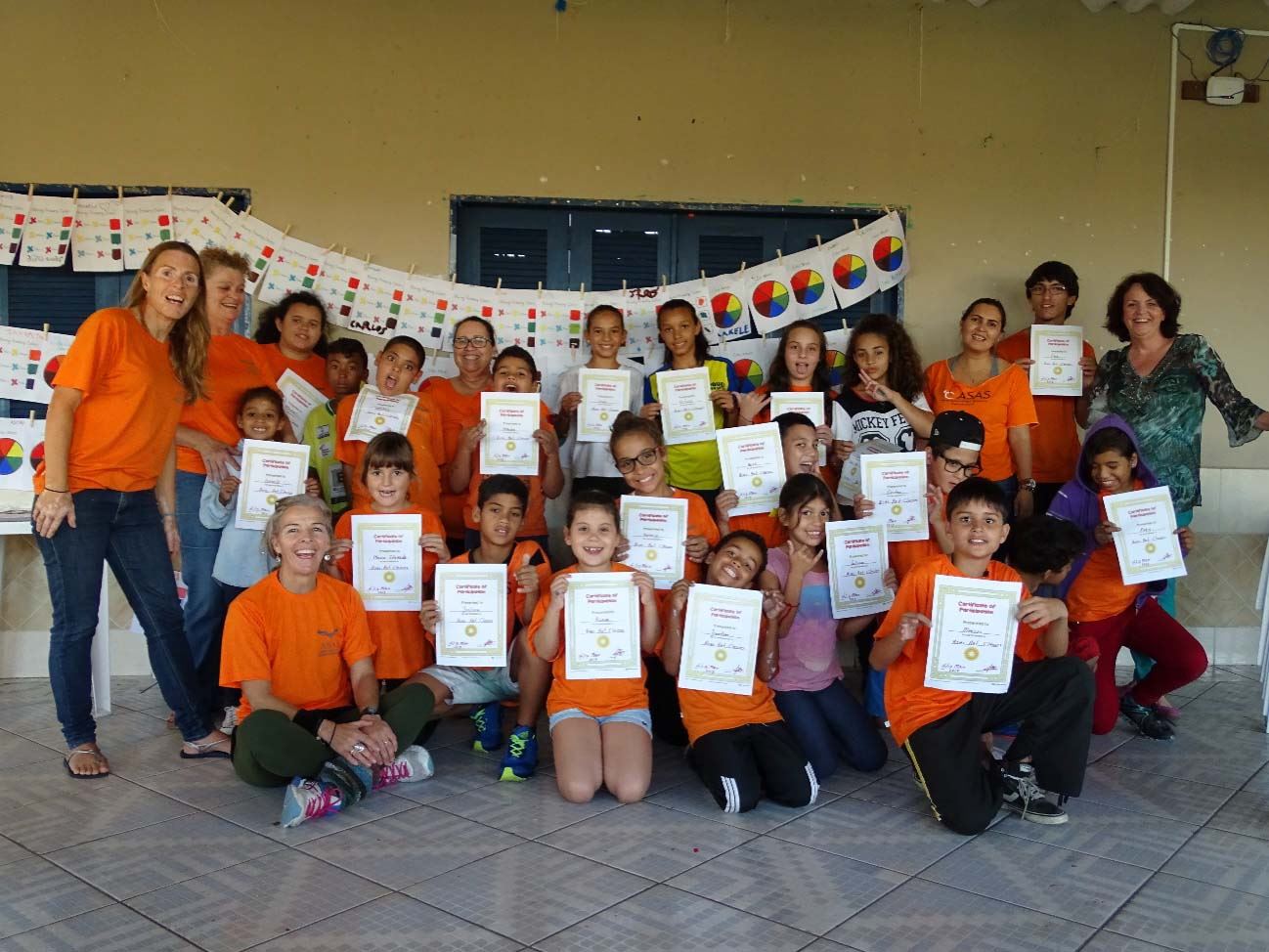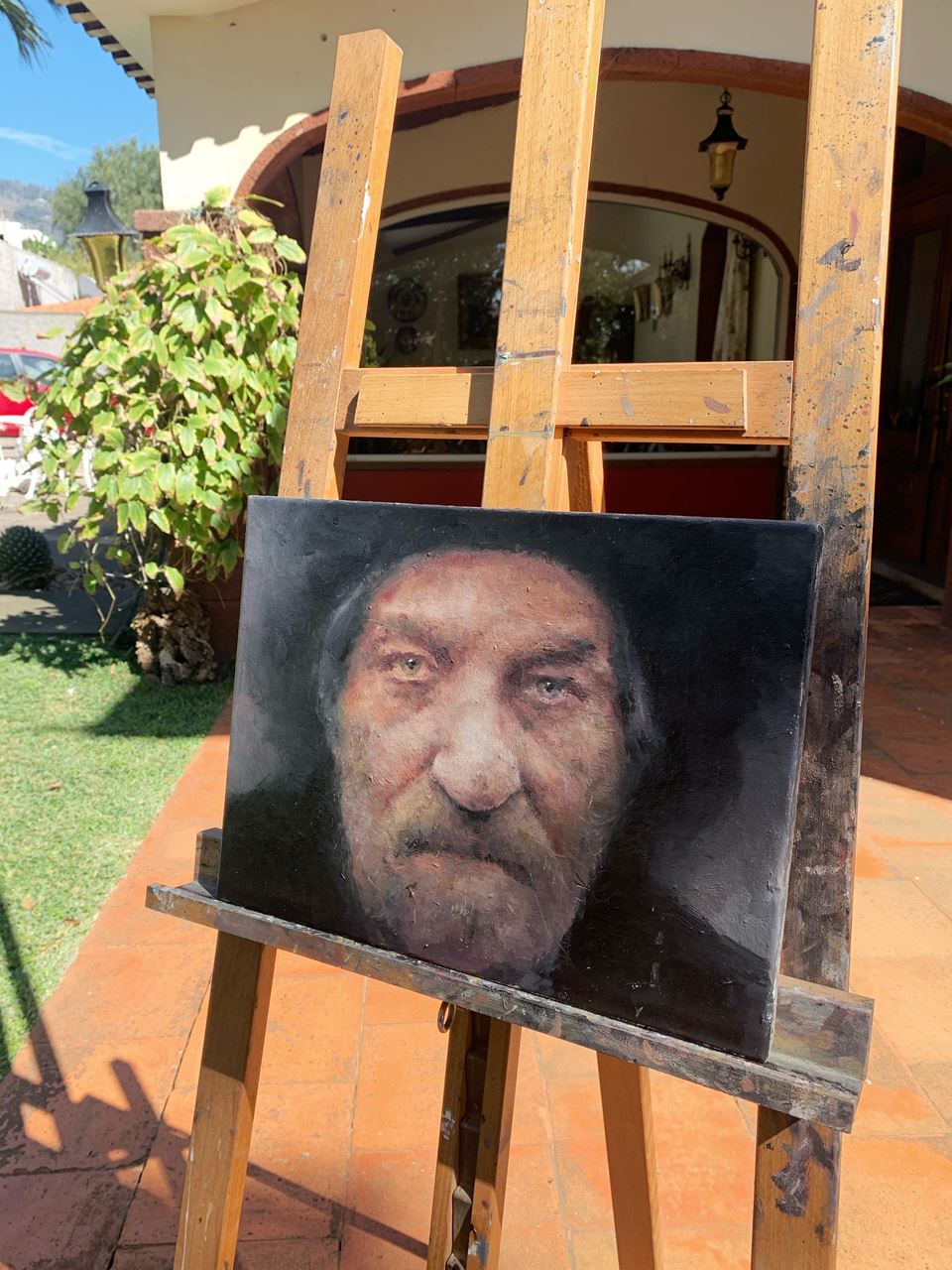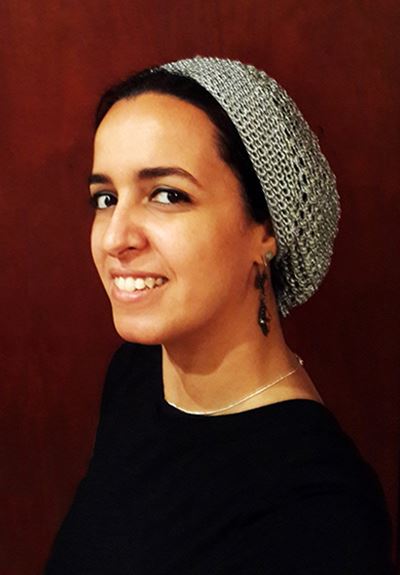artS and design (ad)
STUDY GROUP MEETING IN S.PAULO
17 September 2024
AIC 2024 Midterm Meeting, ESPM, São Paulo, Brazil. You are invited to talk about your research within group or social contexts!
Please read description of invited talk by Jeannette Hanenburg below.

Jeannette Hanenburg is the founder of the ColourProfessionals Institute in Antwerp, Belgium. A consultancy firm for advice on Colour Concepts, and a training centre for colour specialists.
ColourProfessionals offers diverse courses and training in the field of colour. Jeannette believes that a real understanding of colour can only be achieved by experiencing the interactions of colours, and that it involves lifelong learning and collaboration between the different disciplines working in the field of colour. Jeannette is a co-founder and the president of the Belgian Colour Association, ICA-Belgium.
The AIC Study Group on Arts and Design-SGAD aims to bring together a plethora of areas that concern theory and practice in the domains of the ‘Arts and Design’. The objectives of this study group include: create a network where artists and designers can communicate and disseminate their work, provide incentive for research in theory and practice of the disciplines englobed in the SG Arts and Design and encourage researchers of these domains to participate at AIC conferences. | Prof. Dr. Maria João Durão | Chair School of Architecture, The University of Lisbon Dr. David J. C. Briggs | Co-Chair National Art School, Sydney
SGAD has over 50 members from 24 countries: Argentina, Australia, Austria, Brazil, Chile, Egypt, Finland, France, Germany, Hungary, Italy, Iran, Israel, Japan, Mexico, Norway, Portugal, Peru, Singapore, Slovenia, Sweden, Switzerland, Turkey, UK and the USA. Annual Reviews - download recent activities of this study group |
Disciplines under the umbrella of the ARTS AND DESIGN Study Group range painting; sculpture; drawing; illustration; illuminated manuscripts, printing; photography, cinema, audiovisuals, and virtual reality; jewelry design, fashion design, textile design; communication and graphic design; product and industrial design; furniture design, automotive and aeronautic design, among other related expressions. We are in an age of the hybrid, the crossover, a time when the combined force of new media, postmodern thought, and history has made it possible for artists to assemble various art techniques, therefore boarders are not always clear-cut in the contemporary Arts and Design practices. For example, in the domain of painting, the stretching of definitions can be the actual substance of work-the same applies to sculpture and other traditional art domains. However, art expressions from previous eras are also contemplated and encouraged. |
2021 SG AD ACTIVITIES AIC 2021-MILAN Workshop of the Study Group on Arts and Design (SG AD) COLOUR INTERDISCIPLINARITY APPLIED TO THE ARTS AND DESIGN Date: Wednesday, 1 September 2021 Time: 3:30 – 5.00 PM (local time UCT+2) Note that participants must be registered in the AIC021 Congress. WELCOMING REMARKS and PRESENTATION OF AIC STUDY GROUP ON ARTS AND DESIGN KEYNOTE SPEAKER: Jeannette Hanenburg Professionally involved with colour for almost 20 years now. As a ‘late bloomer’, I developed my professional skills by following colour courses by experts and companies around the world. How colour can be applied in different contexts, always keeping the laws of science in mind, is something that fascinates me immensely. The effect of colour is always in flux and to keep developing my own knowledge, I am an active member of various international colour associations, 4 AIC study groups and visiting meetings and congresses around the world. Activities/expertise: • Owner House of Colours, Training and Advice Colourprofessionals • President Belgian colour association - ICA_Belgium – member AIC • Board member ILA, International Light Association • Markting & Development Colournostic – Coaching with Colour
Art Classes at Ações Sociais Amigos Solidários(ASAS) – Florianopolis, Brasil. Room with a view – A case study The aim of these art classes is to have underprivileged children experience the possibility to express their feelings and expose emotional distress through colour and art. In this talk you will see the proceedings of this work. In 2016, I taught the principles of mixing colours, how to use colours to express emotions, and to make this into an art work. I went back to Brazil in 2019 and worked with the new art teacher Fabiola Aguiar Machado. The exercise we developed is based on the art period of Renaissance paintings, ‘Room with a view’, and stands for an outlook on dreams, future, nature and freedom. The children were asked to make a room with a view, imagining their own future and dreams. After completion a magazine was made with their work. In the magazine, not all paintings are published because of the depressed state of mind of some children. For them an immediate psychological treatment was arranged. Art is a way of expressing yourself and your emotions, and gives the opportunity to show ones view of the world. This exercise, once more, showed the worrying situation of many children. KEYNOTE SPEAKER: Larissa Noury President Founder of “Colour-Space-Culture” Association. PhD in Arts (Bordeaux, 2003) and Architecture (Saint Petersburg, 1988), Professor of Colour at ITECOM Art& Design, Paris. Author of 3 books “Colour in the city”, 2008, “Symbolic. Colour in the city”, 2010 and “Symbolic of colours. Art, Design, Architecture”, 2020, she is a colorist for Art, Design and Architecture. Golden medal of International Lepine Design competition. Invited professor High School of Fine Arts and Architecture in United States, China, Japan, Sri Lanka, Korea, United States, India, Emirates, Australia, Malaysia, Spain etc. She has done more than 30 solo shows, and group exhibitions. Her work is in many private collections and in nine museums.
Tactile painting & Haute Couture The connection between art and fashion is obvious from the end of XIXth century. Art has often been a major source of inspiration for dress designers of XXth century: we can mention some creations by Paul Poiret, Sonia Delaunay, Elsa Schiaparelli, Coco Chanel, Yves Saint Laurent, Jean-Charles de Castelbajac and Givenchy. In their profession, art is a part of fashion. The designers paraphrase the masters of painting. My inspiration comes from my own painting, from within. Jean Marie Pujol, couturier who worked with Dior and Yves Saint Laurent at the time, designed several dresses to be painted using my technique to perpetuate the union of art and fashion. With this personal style, we created a series of hand painted dresses “Tableaux Vivants / Living Paintings” presented during my exhibitions and international events. A constant transformation, beauty of nature, the interaction of forms and images... It is towards this universe of harmony that I invite you. Everything lies in the pondering of both visual and tactile beauties, which conceal thus a created space. www.youtube.com/watch?v=5-YKLUxJomg This type of art, beyond the visible, enriches us by its power and its self-fulfillment. FIRST EDITION OF THE SG ARTS AND DESIGN VIRTUAL EXHIBITION Curated by the Chair, Maria João Durão DISCUSSION AND CLOSING NOTES AIC 2021 Congress Special Sessions - AIC2021 AIC - International Colour Association - SG Art and Design (aic-color.org) 2019 SG AD ACTIVITIES "A Cor em Acção" (Colour in Action) by Verónica Conte
This Report begins with two highlights: a book in Colour and Design and a painting. Designer and Architect Verónica Conte published the book "A Cor em Acção" (Colour in Action) https://www.bythebook.pt/livro/a-cor-em-accao/with a focus on conceptual and methodological interactions implemented in the urban-rural contexts of Montemor and Ruínha. Participatory actions of design and painting were used by the author as source for research within her Post-doctoral programme in Design, carried out at The Lisbon University School of Architecture. Artist and architect Sarah Francis Dias used oil paints on canvas to depict the passage of time with brushstrokes of colour reminiscent of techniques used in the golden periods of oil painting.
‘Time’ by Sarah Frances Dias, oil on canvas, 30cm x 40cm At AIC 2019 organized by Grupo Argentino del Color (GAC), in Buenos Aires, a set of papers were categorized under ‘Arts and Design’ with a focus on the central theme: ‘Colour and Landscape’. Robert Hirschler explained the optical phenomena underlying pointillist/divisionist techniques and colour impressions created by a selection of neo-impressionist paintings, in his ‘Colour theory and neo-impressionist landscapes’.R. Aslanoğlu & N. Olguntürk addressed the role of colour in ‘visual complexity visual interest’, andA. Tron related evident and underlying colours through colour constancy. Paula Csillag & Ana L. Lupinacci presented the use of landscape in the work of Fred Jordan, the ‘Brazilian master of color’ and F. Silva & L. Silveira also dealt with ‘Color in Brazilian landscape painting in the beginning of the XXI century’. R. Aslanoğlu, et al chose wheat field colours of Vincent van Gogh to focus on seasonal transformations of colours, and M. Arrarte-Grau claimed ‘timelessness and temporality’ as features of landscape colours.
Left: Harald Sohlberg’s painting Street in Røros in winter, oil on canvas 60.5 x 90.5 cm, National Gallery, Oslo (1903). Right: Røros by Google street view, 2010. Alex Booker & Kine Angelo showed how Norwegian painter Harald Sohlberg captures the ‘essence of colour and atmosphere that are particular to the interaction of northern light and landscape’ Gabriela Nirino, et al. dealt with colour and landscape in textile design, and M. Mirian & F. Mahyar analysed how colours of clothing can influence the ‘colourscape of cities’ With Elisa Cordero-Jahr et al., aquarelle became a powerful tool for representing colours of landscape, and with Simone Maffei Simacek, et al. children's illustration colours unveiled an emotional analysis. Villaa & M. Páezb proposed a model for sustainable use of cultural values in graphic design, and L. Períes, et al. focused on colour as a landscape component in townscape catalogues. Z. Wang used China's high speed railway map as a case study for the impact of user-centred information design principles on the public's use of transport map design; G. Lee, et al. related ‘Designers’ experience and use of colour information’, and A. Nasseraldin, et al. dealt with the specifics of colour in creating a successful logo. L. Walker treated colour as a mimetic agent ‘between skin and landscape’; T. Villa & M. Páez devised a Design workshop for young people with down syndrome; S. Ribeiro offered a ‘Bodygraphy’ through complementary colours found in landscape; and P. Ramirez viewed the Universe in six colors in an atlas of natural dyes. ‘Cesia’-a term introduced by José Luis Caivano was adoped by V. Jofre in ‘Cesia in nature and in the representation of nature. Luminous cesia: a special case’.
In the field of cinema, Pedro P. Souza dealt with colour in the representation of homosexuality in the films ‘ A single man, Blue is the warmest color, and Moonlight’ , and L. Echagüe connected ‘Painting, landscape, cinema and color’. Finally, Roy Osborne received the ‘Colour in Art & Design Award’, presenting a lecture on Renaissance Colour Symbolism. |
2018 SG AD ACTIVITIES The AIC Study Group on Arts and Design held its inaugural meeting at AIC2018 in Lisbon on 27th September 2018. Participants introduced themselves and their research interests in a room with a view to the gardens of the Fundação Calouste Gulbenkian. Painter and keynote speaker Luísa Arruda (Portugal) presented her research on the historical hospitals of Cascais: Hospital de Sant’Ana in Parede and Hospital Ortopédico in Alcoitão; Joana Saes (Portugal), who received the first runner-up prize of the AIC Student Award, explained how colour impacts therapies in TEACCH and Snoezelen rooms, as part of her Ph.D. in Design; Filipa Santos (Portugal) used the interiors of Gelre Hospital in Zutphen as case-study for conceptualizing a colour and light model, as did Zélia Simões (Portugal) with industrial environments in search for comfort and wellbeing .
Keynote speaker João Brehm (Portugal), painter and cinematographer, took us on a journey through a complex set of experiments with colours and pigments to create his paintings of imaginary universes; Verónica Conte (Portugal) presented actions that include participatory paintings on residential façades; Ana Pais Oliveira (Portugal) addressed chromophobia in contemporary artistic practices; Renata Pompas (Italy) adopted the didactics of colour to speak about contemporary art; Elodie Chandernagor (Singapore) raised issues concerning space and different uses of colours in Western Visual Art; Susana Ribeiro (Portugal) related painting to sensory experience on primary blue; Sharon Avital (Israel) on the relations between colour, geometry, and consciousness; Mahshid Baniani (Iran) on colour in Ancient Persian rituals; and Sarah Frances Dias and Maria João Durão (Portugal) on the significance of colour in Islamic Art and Architecture. Colour and emotions ran across different areas: Wen-Yuan Lee and Ruei-Ju Hung (Taiwan) showed how texture and gloss influence colour emotions and colour harmony; Simone Maffei-Simacek (Brazil) used a case-study to show primary colours as emotional signs for visual design; Cristina Salvador (Portugal) explored emotion and sustainability in the context of children’s furniture. Pousi Swailem (Egypt) personalised colour palettes in home furnishings, and Barbara Matusiak (Norway) addressed a colour rendering method of window glass. Eva-Lena Bäckström (Sweden) showed how to create unique colour choices for products; Luísa Martinez, et. al. (Portugal) with colour contrast in packaging and consumer product perception. Designer Alessandra Cirafici (Italy) analysed colour and augmented reality in museum fruition; Yukino Shimizu , Kanako Hirano, Nozomu Yoshizawa (Japan) presented a study on lighting control strategies by combining daylight with white LEDs in museums; Helena Soares (Portugal) considered the scenic space as mean of urban regeneration, using light, colour and (im)materialities, while Elif Ensari and Saadet Akbay (Turkey) explored the effects of façade colour on walking preferences. Textile and fashion colours were approached from different perspectives: spotting the aesthetically dynamic properties of naturally dyed and finished textiles, by Isabel Rosa Müggler, Cornelia Gassler (Switzerland) or developing methodologies for designers engaging with digital colour inkjet printing in Textile Design by Becky Gooby (UK). A comparison of fashion colours between China and the UK was established by Jie Xua and Xueqing Zhangb (China); S. Lee and Y. Lee (R. Korea) proposed a colour fashion material pattern, and Ichiro Katayama et al. (Japan) focused on the tooth crown colours of people in fashion magazines. Gregor Franken, Maruša Panger, Klementina Možina (Slovenia) showed the impact of colour combinations on LCD display legibility; Nuno Alão (Portugal), First Prize for Best Poster at AIC2018, explored visual images and information units; Natacha LeDuff (Germany) presented an approach to colour mediation; Isabella Otto, Alice Plutino, Matteo Lanaro, Alessandro Rizzi (Italy) presented a study on chromatic variation of movies, and Milena Leite Paiva (Brazil), colours in the Brazilian miniseries Suburbia. Lisbon was also the subject of colour studies by Aléxia Brasil (Brazil) and Ana Guerreiro (Portugal) Lisbon: a colour experience from sketch to illustration; Elisa Cordero – Jahr’s (Chile) “travel journal (in colours) of Lisbon city” and Annamaria di Cara (Australia) based her research on sensory experience contours of the natural and built environment, by comparing Lisbon and Sydney. |
Explore the work of some of our members |
Pousi Swailem Personalised Colour Palettes in Home FurnishingThis study aimed to investigate how home furnishing stores can provide a personalised colour palette to its consumers in the United Kingdom. A framework of research read more |


.jpg)
.tif)







.jpg)
.jpg)
